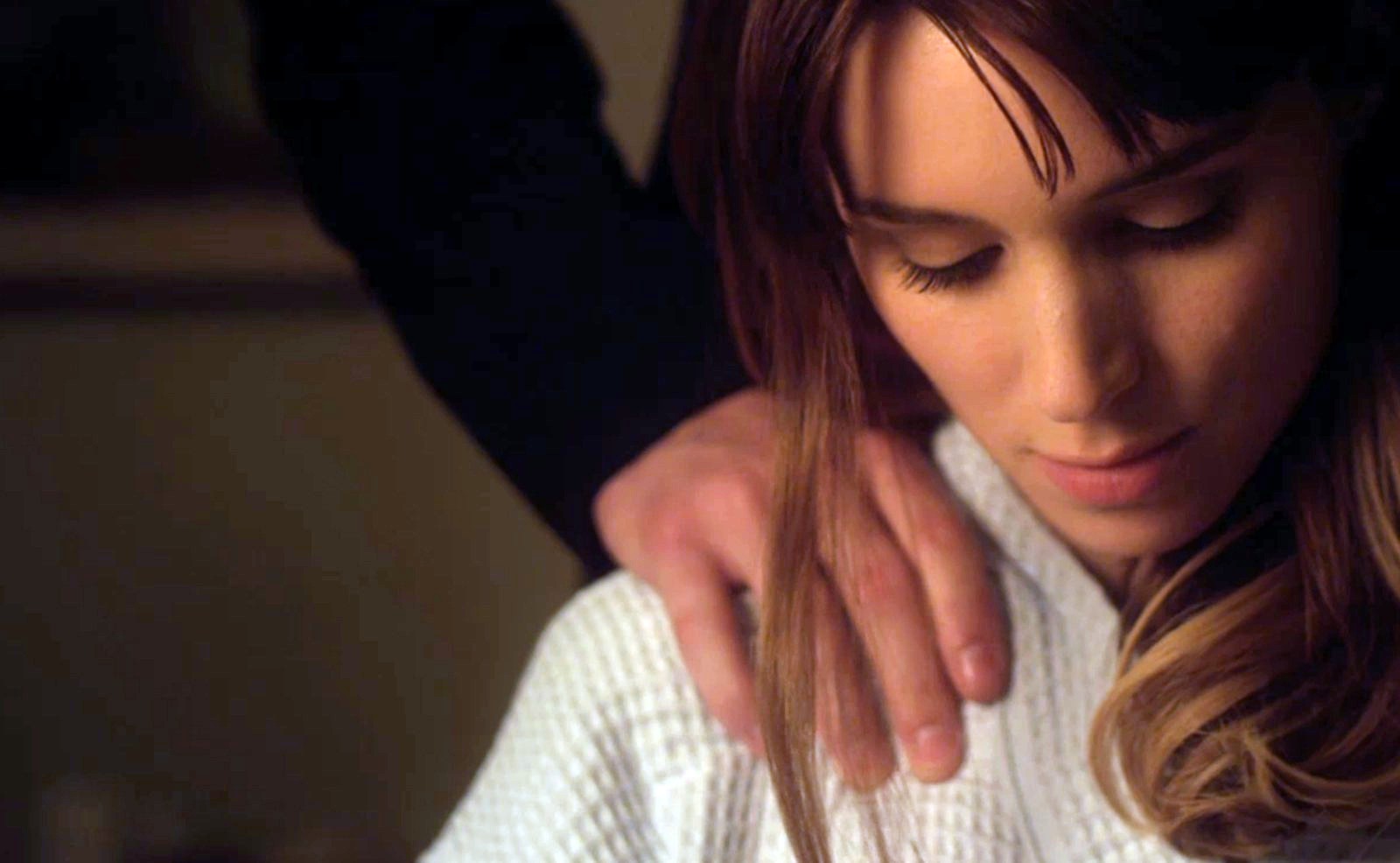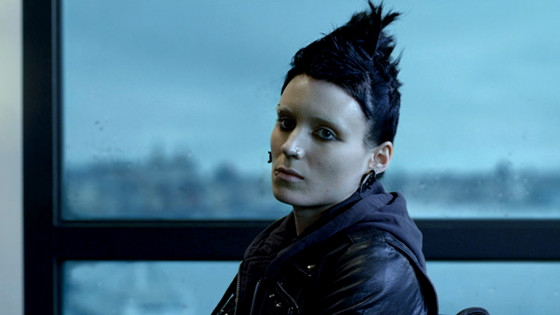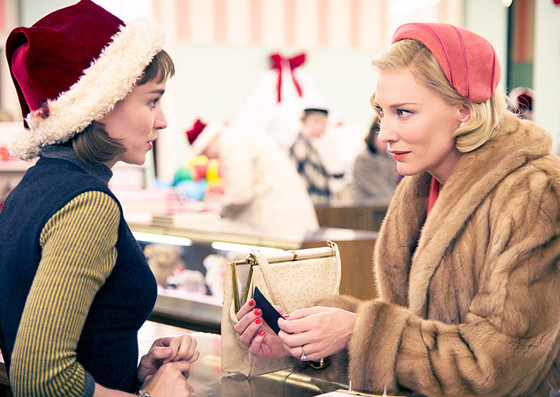4. Ain’t Them Bodies Saints (2013)

Mara stars opposite Casey Affleck and Ben Foster in this lyrical romantic drama influenced by Terrence Malick’s style, about a young outlaw couple, set in 1970s Texas.
Bob (Affleck) and Ruth (Mara) are outlaws who run into trouble on their latest heist, during which Ruth shoots and wounds a police officer named Patrick (Foster). Bob accepts blame, while Ruth gives birth to their daughter. After a few years, Bob escapes from prison and heads in the direction of home, determined to see his daughter and wife. In the meantime, Patrick, who doesn’t know who shot him, begins to develop feelings for Ruth and her little girl.
The plot is simple, but what makes this movie great is the way it conveys mood and emotion. It’s a small story about love and life with big, mythic feelings, and it somehow lifts its characters, who are flawed human beings, to a saintlike level. As Ruth, Mara gives a moving, heart-warming turn as a young woman who must choose parental responsibility and maternal instinct over her heart’s desires.
Her acting is restrained and subtle in creating a slight outward force, conveying deep anger, especially in the initial parts of the movie and as the movie progresses, that anger reduces with the calmness that her daughter Sylvie brings.
Ruth is shown as the pure and ideal mother, but director David Lowery is wise enough to suggest that her vulnerability is also an act; in the scene when Patrick tells her that he only sees good in her and she hugs him and replies, “maybe I’m just fooling you…”, she conveys in a delicate way that her passion is for Bob, yet she sees that Patrick offers safety and protection for both her daughter and herself.
Not only this, but Ruth seems able to find a kind of peace deep down with Patrick that she could not find with Bob. She doesn’t and will probably never love Patrick – what he brings to her life is stability and convenience. A comfort after a long winter, but not a heart she connects with. A companion, an ”adjustment”, or a compromise, perhaps.
Certainly conflicted in what she wants to do, she tells Bob to stay away in a letter he never received, and yet at the same time, she wanted nothing more than for him to come back. Mara beautifully displays such intensity without a tear or any overacting in this scene.
Ruth Guthrie is the most ethereal character portrayal by Mara. She brings an appearance of hope to an otherwise gloomy scenario, transforming it into a moving story of survival.
3. Side Effects (2013)

After her breakthrough performance as Lisbeth Salander in “The Girl With the Dragon Tattoo”, Mara’s next role was in another dark psychological thriller, this time in the world of antidepressant drugs in modern-day Manhattan.
Directed by Steven Soderbergh (his self-proclaimed last theatrical feature) and with the help of Scott Z. Burns’ smart script and Thomas Newman’s haunting, almost possessed score, this is essentially a medical neo-noir with Hitchcockian suspense, Fincher’s mystery, and Soderbergh’s atmosphere. What’s interesting about “Side Effects” is that it starts out as one sort of film, then turns into another, and ends as something else entirely.
Mara plays Emily, a young, pretty, but troubled woman who is married to Martin (Channing Tatum), who was convicted for insider trading and has recently been released from prison after four years.
Even though he is out of a job, he is trying to bring in money as soon as possible. Lonely and having a hard time dealing with life in general, Emily is not the same woman anymore. She suffers from deep depression – “an inability to imagine the future” – and her life is on the brink of total collapse.
After a failed suicide attempt, she starts taking different antidepressants and goes to therapy with Dr. Banks (Jude Law) on a weekly basis to report her progress, or lack thereof. Emily suggests a new pill called Ablixa – the wonder drug that brings back her confidence, sex drive, and love for life. Emily’s condition begins to improve until she begins having odd side effects, and does a very terrible thing.
In this complicated role, Mara shows a broad range and does a wonderful job of throwing her emotions all over the place, as she goes from crying to extremely happy from one minute to the next. This time a much more feminine and vulnerable character than Lisbeth Salander, Mara creates Emily with an enigmatic and dark mysteriousness.
She is creepy, magnetizing, and complex, her face is a puzzle that is difficult to read, and her soulful green eyes are possibly innocent, possibly calculating. And with her husky voice, she demonstrates an ability to be scared and scary at the same time.
This is Mara’s most chilling performance to date, and a portrayal that immediately calls to mind Anthony Perkins as Norman Bates. It elevates the entire movie, and what could have been a decent trashy erotic thriller becomes something eerier and more elemental, on the level of a Hitchcock movie.
2. The Girl with The Dragon Tattoo (2011)

After performing multiple auditions and screen tests, beating multiple famous actresses in the process, Mara ultimately got the part of the antisocial, defiant, bisexual, dangerous punk hacker Lisbeth Salander in the dark world of serial killings, incest, corruption, and Nazi secrets from the past in this Hollywood take on Stieg Larsson’s Nordic crime bestseller.
Working with her just half a year earlier on “The Social Network”, this time David Fincher got the chance to mold her into his perfect goth statue, taking full advantage of Mara’s talent to create the full display of method acting.
The most fascinating aspect of this was Mara’s complete change in physical appearance to become Salander. Her long light brown hair was cut short and dyed black in a style reminiscent of 1970s punk and gothic fashion; she had each of her ears pierced four times; her lip, brow, nose, and nipple were pierced for the role; her eyebrows were bleached; and she was wearing a temporary dragon tattoo.
Playing one of the most interesting and difficult female characters ever put on the screen, Mara commands every scene with a silent burning rage and a deeply-rooted vulnerability. Her eyes are wide and emotionless, almost as if you can see directly through her. She embodies Lisbeth, immediately bringing immense intimidation, danger, and fury every time she comes on the screen. And with everything that has happened to the character, we understand that Lisbeth has a right to be that way.
At the end of the film, Lisbeth developed an emotional attachment and sexual relationship with Blomkvist and made the very difficult decision to communicate her loving feelings to him. In the bitter finale, having never before had this kind of emotional attachment, she finds herself with other never-experienced feelings of painful jealousy.
Few modern actresses can express so much with only one facial expression like Mara. She retains Lisbeth’s intelligent, hard-hearted appearance, but is confident enough to allow us to see the hurt child residing within.
This is the most fearless, dedicated, electrifying showcase from Mara we’ve seen, catching every nuance of Salander’s complex personality, from her prickliness, mystery, and strangeness to her vulnerability and tenderness.
Watching her in this eerie, brutal, and complex thriller is like witnessing the birth of a star. She received high praise for her dedicated performance and transformation, although comparisons with Noomi Rapace from the original film adaptation were inevitable. She was nominated for her first Golden Globe and Oscar for her performance, and even more importantly, this performance definitely put her on the list of the best young actresses in Hollywood.
1. Carol (2015)

The role of Therese Belivet, the young shopgirl and aspiring photographer who falls for an older, married woman in Todd Haynes’ aesthetic masterpiece set in 1950s New York, is without a doubt the best performance from Mara to date.
Based on Patricia Highsmith’s groundbreaking lesbian pulp novel “The Price of Salt” from 1951, this engrossing love story isn’t so much a parable about repressed lesbians in the McCarthy era, but more of an enchanting study about the delicate process of falling in love.
In a world where this kind of relationship cannot be acknowledged in public, the two women communicate with their eyes, their glances, and their gestures. Therese is the prism through which the audience sees Cate Blanchett’s Carol Aird, an upper class housewife and the object of Therese’s fascination and desire.
Carol is the titular character, but Therese’s thirsty eyes are the heart of the film. A passive, quiet observer but with a hungry heart beneath, there’s a raw naturalism to Mara’s performance. Her Therese is pure emotion, her eyes often filling up with tears, and her hesitancy to express herself constantly struggling with her desperate need to reach out. Her cute-as-a-button appearance masks a brain racing with a million anxious thoughts a minute.
Mara’s performance in this film is a graceful technical virtuosity. Her every individual gesture, general physical effect, and vocal modulation is built from the careful examination of the acting style in the 50s.
With homages and references to other films everywhere in “Carol” – from David Lean’s “Brief Encounter” and Billy Wilder’s “Sunset Boulevard” to Hitchcock’s “Vertigo” and Antonioni’s “Eclipse”, it wasn’t much of a surprise that Therese’s appearance was modeled to look like a cross between Jean Simmons and Audrey Hepburn (especially from “Sabrina” and “Roman Holiday”).
Beautiful, non-preaching, precious, poignant and optimistic, masterfully directed by auteur director Haynes, and perfectly acted by the two leading ladies, “Carol” is an immaculate work of art and one of the triumphs of 21st century American cinema. It needed the power of Blanchett and the delicacy of Mara to truly work.
Like the entire film, Mara’s performance was (expectedly) too sophisticated and subtle for mainstream audiences and Academy voters (despite receiving her second Oscar nomination), but certainly not for the jury of the Cannes Film Festival, where the greatness of her performance was recognized with the Best Actress award (which she shared with French actress Emmanuelle Bercot). And it was absolutely deserved.
Author Bio: Goran D. Marej was born in Pula (province of Istria, Croatia) in 1982, he now lives in Belgrade, Serbia where he studied history.